Why it's expensive to paint cabinets - Overland Park
We receive two or more requests a month about painting cabinets. When we estimate the cabinet projects, it isn’t uncommon for the owners to be surprised by the cost. We thought due to this we’d explain why painting cabinets in Overland Park and Kansas City is expensive for us to perform, and give an example of what can happen if steps are skipped and you decide to opt for the “cheaper” project.
It’s not paint
First up, if you’re getting estimates for painting cabinets it’s best to ask the painter what product they intend to use. Coating cabinets, trim, or doors isn’t the same as coating drywall. At Great Plains Painting, we don’t use the language “paint” when referring to cabinets, we refer to it by the product name which is enamel to remove ambiguity.
I understand that’s technical and picky. Your cabinets aren’t white and you want them white (or other color) and what do you care if it’s enamel or paint? I get it. But be cautious of the language a painter uses.
Paint vs. Enamel
What is enamel then? Enamel is a coating designed for high touch / high bump areas. Enamel dries much harder than wall paint and is more resilient when it comes to cleaning. On high touch surfaces like cabinets, enamel is a must. Many times we’ve seen projects where the cabinets were brushed with a standard wall paint and around all the handles the paint is peeling off. Enamel cleans with a wet rag or magic eraser and doesn’t streak like wall paint. If you cook in your kitchen and are messy like me, that’s a nice feature.
The cabinets are wood finish now
90% of the cabinet projects we look like, the cabinets are the old stain and lacquer finish (wood color/grain). If your cabinets were properly enameled previously, your project will be less expensive. If we’re starting from stain and lacquer, more expensive.
Bond is important
To ensure the bond between cabinet and enamel is strong, a painter shouldn’t put the top coat right over the lacquer finish. There are multiple reasons why this is a bad idea, the paramount is bond. Lacquer is high gloss and if we apply enamel directly to it, in as little as a month or two you’ll have problems with peeling. If this happens, you have a giant mess on your hands.
Good bond is achieved through a couple steps. First, we scuff sand the painted surface. This gives the lacquer a profile which helps with bond. Sometimes we need to use a deglosser to remove the lacquer, but not always. Second, we prime all painted surfaces. The type of primer is important. We go for oil based products. Oil based primer is nasty and not fun to work with, but has a couple of benefits. It blocks stains better than water based, and it sticks to the lacquer extremely well.
Tanning through
If you’re starting with stain and lacquer wood finished cabinets, you should be concerned about yellowing through. If a painter is telling you they’re using wall paint (not enamel) and they think they don’t need to prime first, I’ll say it’s likely that they’ll also not take your call in 3 months when you cabinets start to yellow.
We’ve seen many instances where surfaces not properly prepared bleed through. This is of noted caution on old oil based stain and lacquer cabinets. If not properly blocked with an oil based primer, lacquer loves to yellow up white paint.
Pictures are worth all this text
Let’s look at a project we estimated where we had everything that could go wrong go wrong.
- Tanning
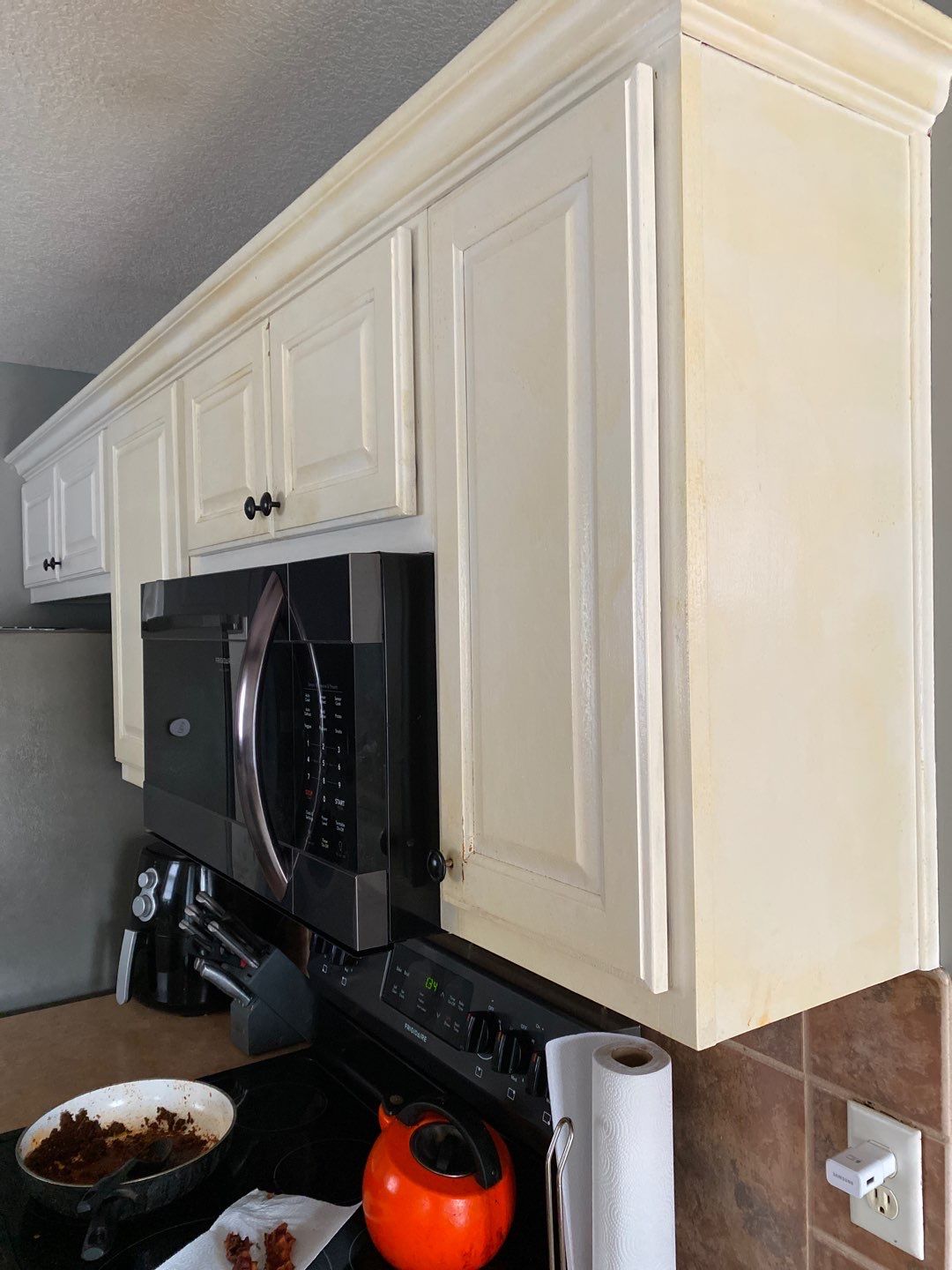
Here we can see the yellowing distinctly. This is a telltale sign that primer wasn’t applied. I’m guessing, but experience says this is likely 2 coats of water based wall paint.
- Peeling
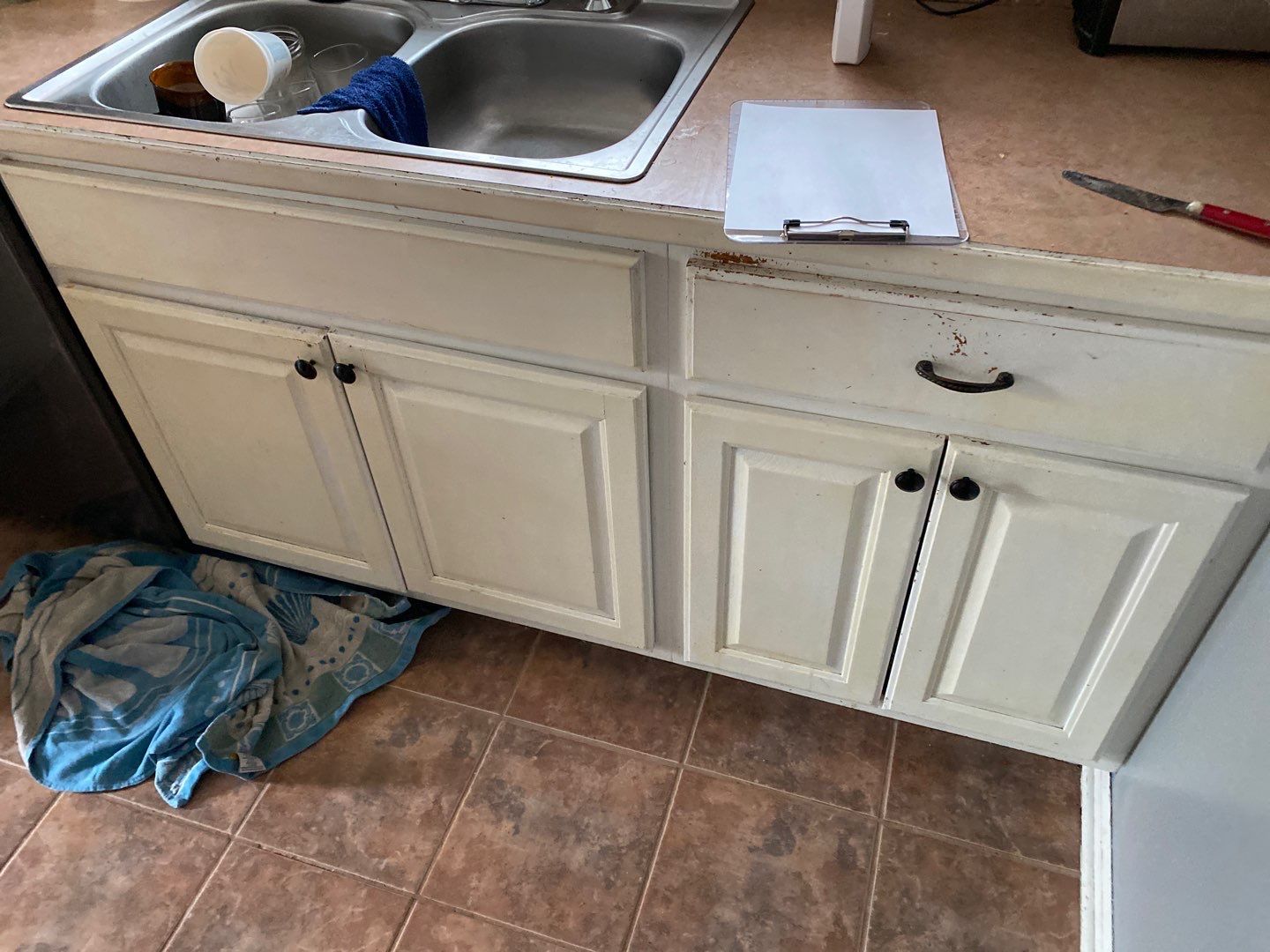
Here we can see that in high touch areas (around the pull on the drawer and at the edge of the sink) the top coat is peeling away. This is happening from normal use. In this case it’s not only that the product used wasn’t enamel, but the bond to the underlying surface is weak due to no priming.
Here are the rest of the photos. Worth noting is you’ll see anywhere the cabinets are touched the finish is peeling off.
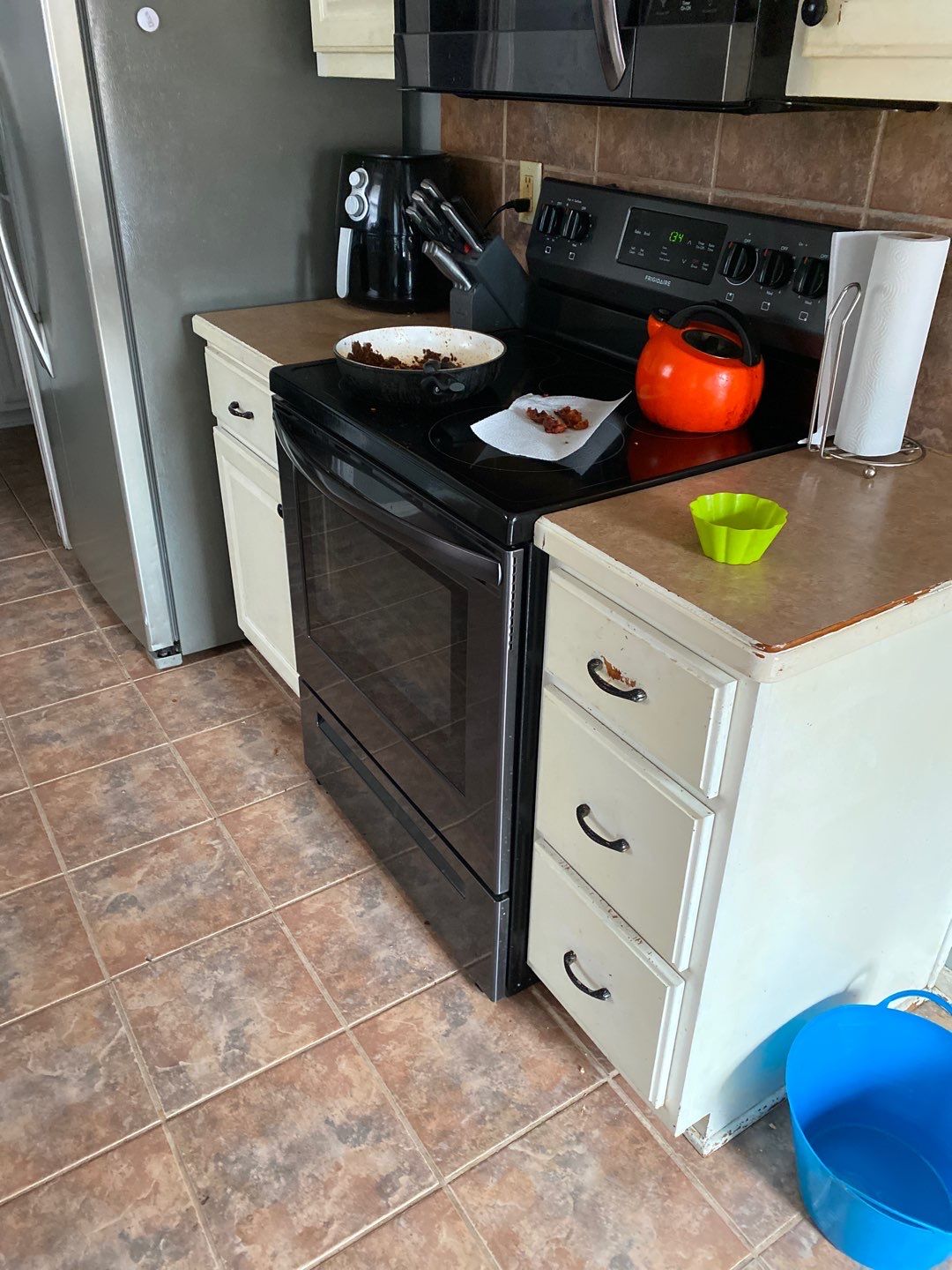 | 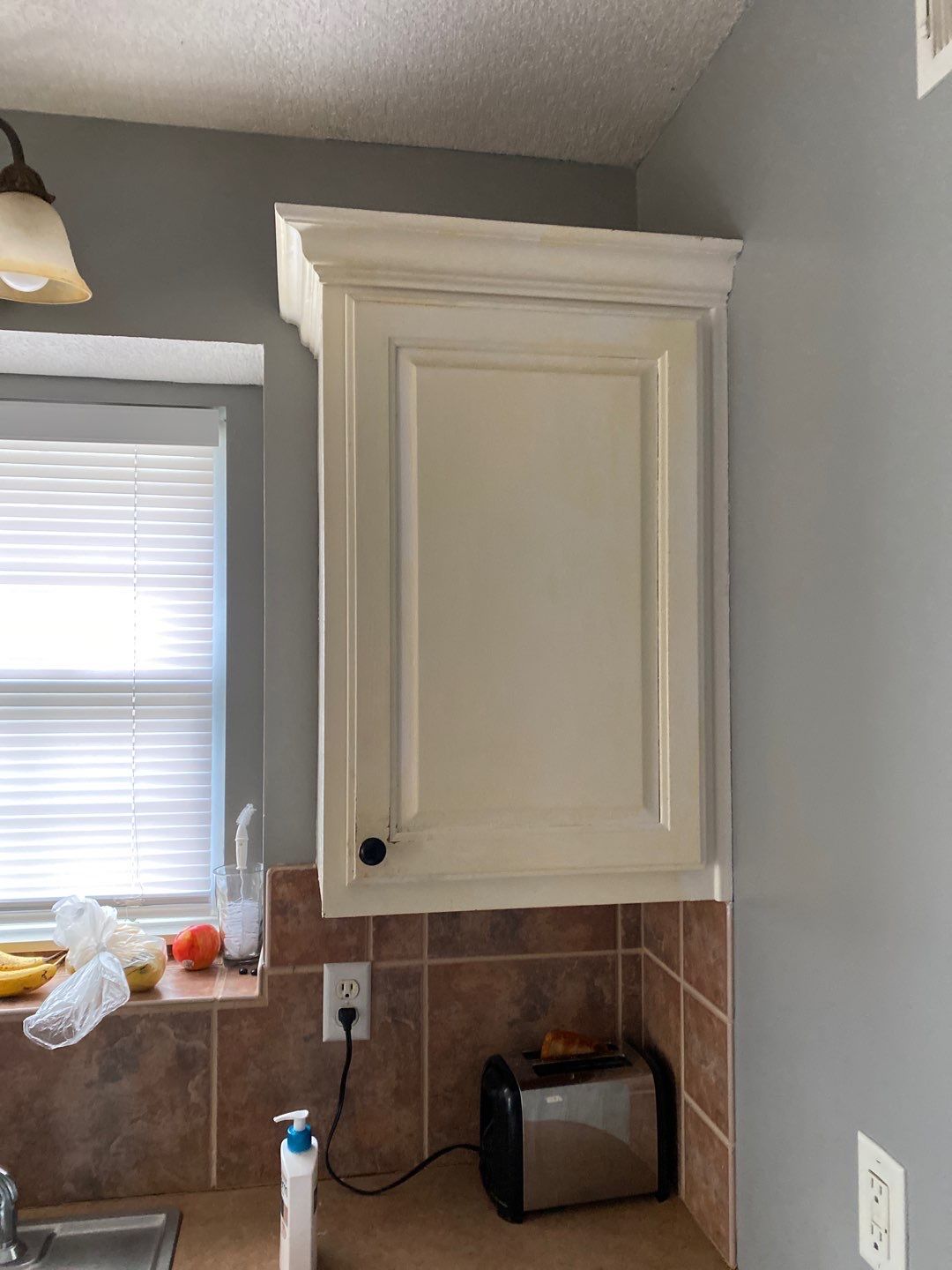 |
|---|---|
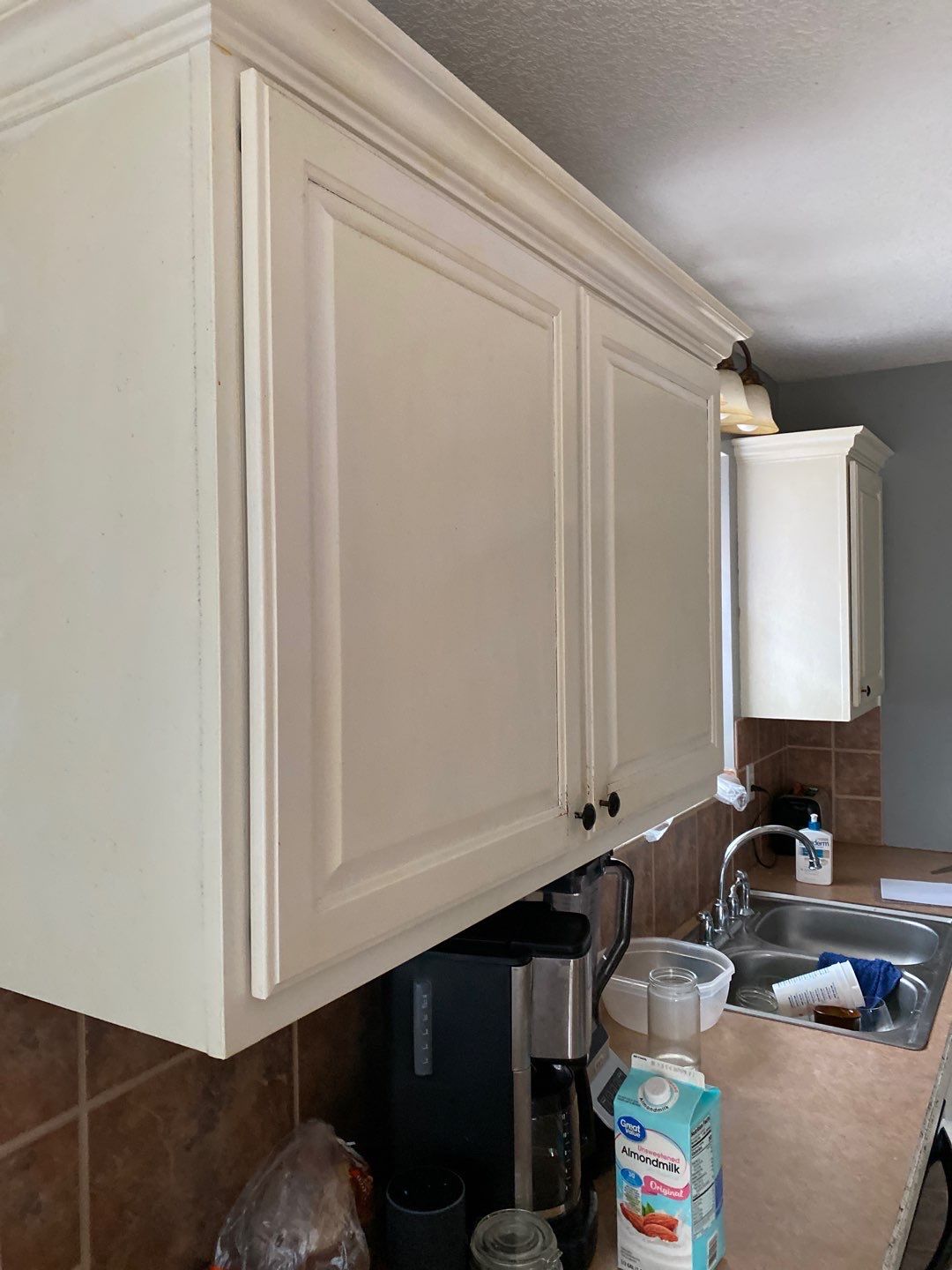 | 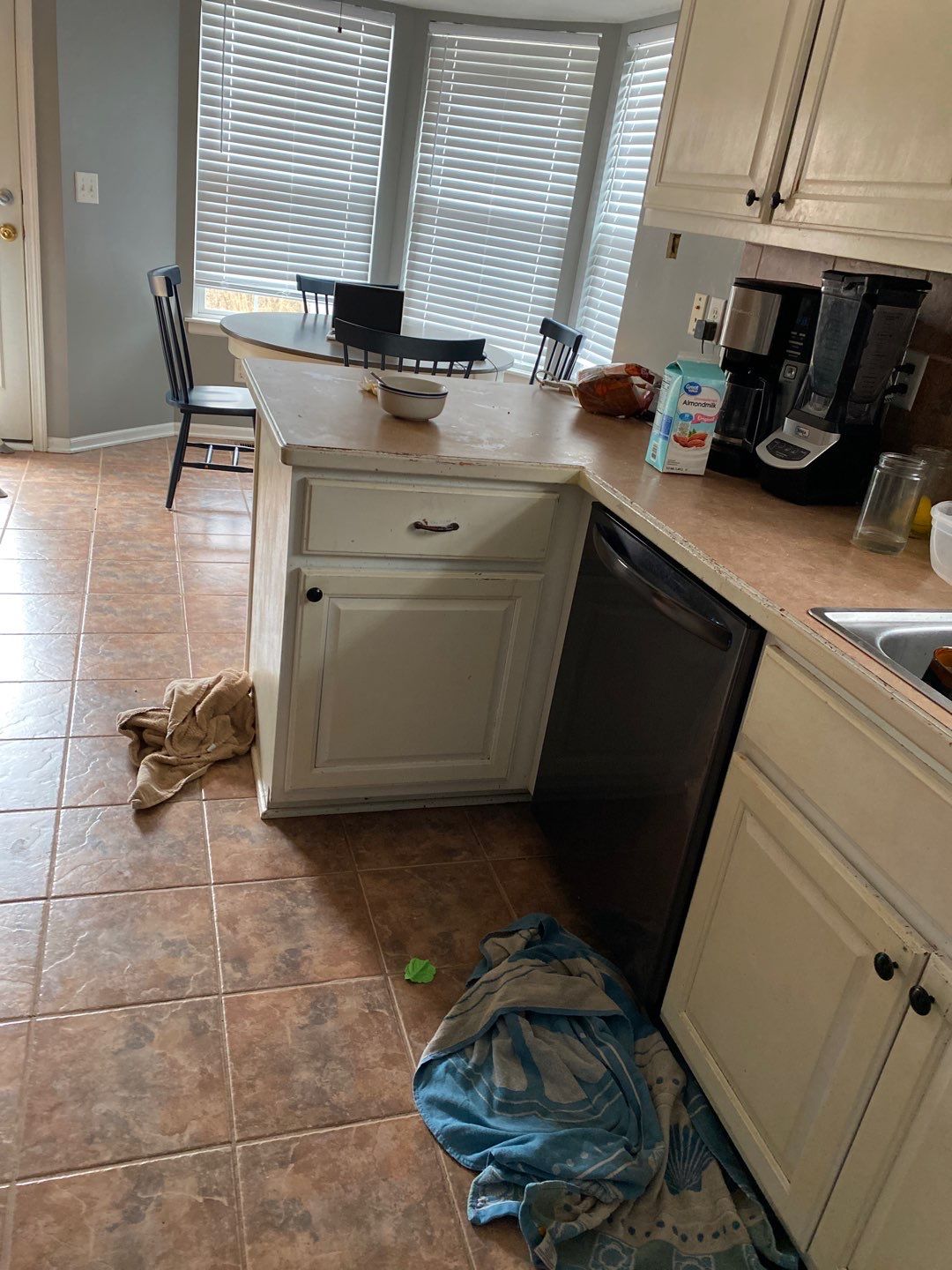 |
Cheaper initial price, more to fix later
Unfortunately when we estimate a project like what we’ve seen in the pictures, IF the project is salvageable its always more expensive to correct than it would be to do it right the first time.
Wood finish cabinets are tricky and expensive to finish. We understand that all projects have a budget, and we’re always happy to help try and meet the budget requirements, but in the case of cabinets the labor and process involved means there is limited room to minimize the cost and ensure the outcome. Simply put, there aren’t shortcuts we can take while achieving the desired result.
To recap:
- use enamel, no wall paint
- proper pre work is a must
- scuff sanding
- deglossing if necessary
- prime with a primer that achieves both blocking and bond
Cheap = brush wall paint on cabinets and walk away. The photos in this post are evidence that’s not a great method. Next week we’ll talk about how we build up our cabinet projects, what steps are involved. This will give you an idea of how much time and effort cabinets are, how much value is added in doing it correctly, and why then they’re expensive.
Do you need your cabinets painted in Overland Park? Contact us today for an estimate!